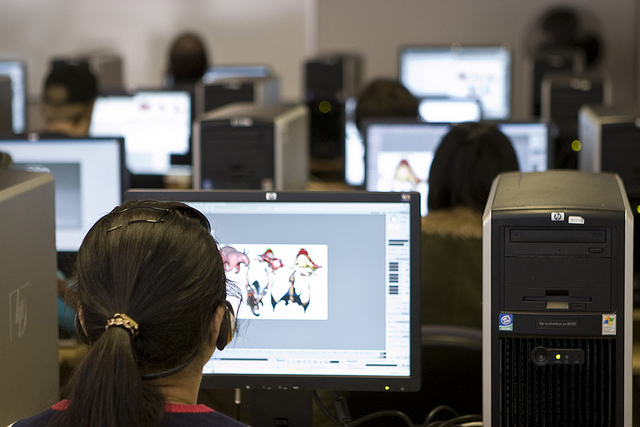A common theme in research on teaching and technology is that there is a Digital Divide between generations: digital natives are those younger than about 30 years old, who have grown up with technology. Digital Immigrants are those older than that who have had to learn technology tools such as computers when they were already adults. There have been major efforts undertaken to help these digital immigrants catch up, and also allow them to use technology tools in the classroom when they are teaching digital natives.
However, from what I’ve seen in my work in the field of educational technology, I think the description of this gap is quickly becoming outdated.
Young students – those who are in school now, have grown up with technology in ways that I never did. I had a computer in my bedroom starting in elementary, but there was still a sense of wonder that this was something new and exciting – and I was eager to learn everything I could about it, including how it worked. Not everyone my age shared that passion, but looking back, I think a surprising number did. In fact, you had to in order to use the technology, because it was much harder to make it work “out-of-the-box” so to speak.
Current students can use technology really well for things they naturally want to do. They can use email and Facebook and cell phones to communicate with their friends. But what I’ve seen is that they don’t understand technology and the way it works. If something breaks, their troubleshooting skills are not nearly as comprehensive as they are for those of us in the generation just slightly above them.
This isn’t necessarily meant as a criticism, either. For me, there’s a strong parallel to cars. I grew up with cars and knew how to use them very well, but I didn’t understand it and I certainly couldn’t troubleshoot problems. In my adult life, I’ve begun to work on increasing my knowledge in those areas, but it didn’t matter to me as a kid. Someone else could and would fix any car problems I had.
Why does this matter?
In our educational process, both at home and in schools, I think we need to recognize that the Digital Divide as we know it may no longer exist in the way we have traditionally defined it. Younger students do need to be taught things about technology that go beyond simply how to use it. Most people can sit behind a car and drive it, just like most people can pick up a piece of current technology and use it. But understanding either is a different process, and one that requires education. Perhaps it’s time to rethink a bit how we use and teach technology.

Thanks for posting about this, JJ! I also grew up “tinkering” with computers and your analogy to working with cars (for our parents and us) works perfectly here. Our parents’ generation grew up with the changes and new technology with cars and therefore were able to troubleshoot because they understood, inherently, why upgrades in technology were made because they understood where it had come from (like an automatic window replacing a crank window). If I looked at the same problem, it’s always been an automatic window so it seems magical to me; if that breaks I have no background for how it used to function. If younger students don’t understand the old technology it’s much more difficult to troubleshoot new problems with software (or hardware) because they don’t have that cumulative knowledge. They don’t have the background to see how things have grown and changed to appreciate the technology. What is going to be their “digital divide”? What are some things that their generation understands so inherently from start to finish that we, just a decade older, struggle with?